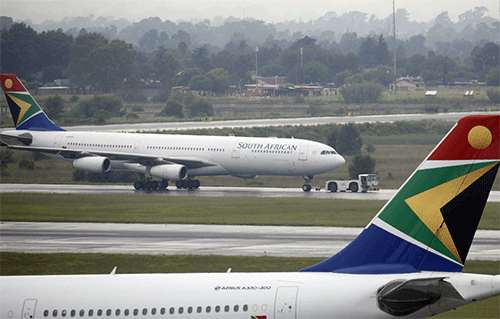African airlines have a high operational cost base and generally, Africans have a low propensity to spend on air travel.
Moreover, connectivity challenges dampen the industry’s expansion and performance on the continent.
Despite these headwinds, there is sustained demand for air travel, which should allow the market to deliver a second year of profitability.
This outlook for African air travel emanates from the International Air Transport Association (IATA), which has announced strengthened profitability projections for global airlines in 2024, compared with its June and December 2023 forecasts. An aggregate return above the cost of capital, however, continues to elude the global airline industry.
“In a world of many and growing uncertainties, airlines continue to shore up their profitability. The expected aggregate net profit of US$30.5 billion in 2024 is a great achievement, considering the recent deep pandemic losses. With a record five billion air travellers expected in 2024, the human need to fly has never been stronger. Moreover, the global economy counts on air cargo to deliver the US$8.3 trillion of trade that gets to customers by air. Without a doubt, aviation is vital to the ambitions and prosperity of individuals and economies. Strengthening airline profitability and growing financial resilience is important. Profitability enables investments in products to meet the needs of our customers, and in the sustainability solutions we will need to achieve net-zero carbon emissions by 2050,” said Willie Walsh, IATA’s director general.
“The airline industry is on the path to sustainable profits, but there is a big gap still to cover. A 5.7% return on invested capital is well below the cost of capital, which is over 9%. Earning just US$6.14 per passenger is an indication of just how thin our profits are—barely enough for a coffee in many parts of the world. To improve profitability, resolving supply chain issues is of critical importance so we can deploy fleets efficiently to meet demand. Relief from the parade of onerous regulations and ever-increasing tax proposals would also help. An emphasis on public policy measures that drive business competitiveness would be a win for the economy, for jobs, and connectivity. It would also place us in a strong position to accelerate investments in sustainability,” said Walsh.
Some of IATA’s outlook highlights include an expectation for operating profits to reach US$59.9 billion in 2024, up from an estimated US$52.2 billion in 2023. Moreover, total revenues are expected to reach a record high of US$996 billion (+9.7%) in 2024 while total expenses are expected to reach US$936 billion (+9.4%) in 2024. Total travelers are expected to reach 4.96 billion in 2024 and total air cargo volumes are expected to reach 62 million tonnes.
Profitability is expected to strengthen in 2024 as revenues grow slightly faster than expenses (+9.7% vs. +9.4% respectively). Operating profits are expected to reach US$59.9 billion (+14.7% from US$52.2 billion estimated for 2023). Net profits, however, are expected to grow slightly more slowly at +11.3%, from US$27.4 billion estimated for 2023 to US$30.5 billion estimated for 2024.
Cargo revenues are expected to fall to US$120 billion in 2024 (from US$138 billion in 2023). Both are down sharply from the extraordinary peak of US$210 billion in 2021, but it is above 2019 revenues, which were US$101 billion, and an improvement on the previous forecast of US$111 billion (announced in December 2023).
Despite the strength of demand, cargo yields are expected to fall 17.5% in 2024, while remaining slightly above 2019 levels. This is a normalisation after extraordinary pandemic highs. A key factor in this is the significant belly capacity that entered the market in 2023, in tandem with the recovery of passenger travel.
In general, air cargo is in a period of correction following an exceptional year in 2021. Yields, capacity growth, the belly-dedicated freighter split and other key metrics are moving from the extraordinary mid-pandemic situation towards a continuation of pre-pandemic trends and levels.


